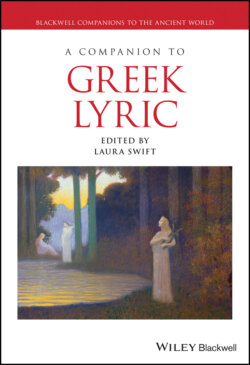Читать книгу A Companion to Greek Lyric - Группа авторов - Страница 75
Origins/Provenance
ОглавлениеPapyri are archaeological objects, and are therefore best understood in their archaeological and historical contexts, to the extent that these can be reconstructed: from archaeological find spot, to use (and reuse) in antiquity and modern ownership or collecting history. But due especially to philology’s tendency to privilege the text above all else, papyrology—and especially literary papyrology—has long been weak on archaeology. Early excavations such as those of the famed Oxford “Dioscuri” (Bernard Grenfell and Arthur Hunt), for example, prioritized the extraction and accumulation of papyri. While attempts were made to organize texts that were uncovered together where possible, the “torrent” of papyri Grenfell and Hunt were uncovering on a daily basis at al-Bahnasa precluded any sort of detailed inventory or accounting of find-spots, let alone a more scientific recording of stratigraphy. (Figure 7.3) We are not much better served on this front by the reality of a lively antiquities market: purchased papyri were accompanied by the dealer’s word, which could (but need not) be well informed. There are exceptions (see, e.g., Claytor and Verhoogt 2018) but the principal methods of acquisition during the heyday of discovery regularly make the analysis of a papyrus in its archaeological context impossible. Documentation is frequently frustrating or nonexistent.
Figure 7.3 Excavating for papyri at Oxyrhynchus (al-Bahnasa). (GR.NEG.048, courtesy of the Egypt Exploration Society.)
Such historical limitations notwithstanding, every editio princeps should include a frank and thorough accounting of a papyrus’ provenance, an all-encompassing term under whose umbrella the object’s history (from antiquity to the present) is meant: its ancient context, the circumstances of its discovery, and its modern ownership or collecting history. Where documentation exists in the form of receipt(s) for sale, archaeological notebook(s), or institutional acquisition/inventory report(s), it should also be reported. Transparency on this front is essential to responsible scholarship; in addition to the possibility of forgery, Egyptian law has since 1983 prohibited the domestic antiquities trade and has established definitively that all archaeological sites and objects are the property of the state. Any papyrus that cannot be proven to have been exported before that date therefore falls into a legal—not to mention ethical—grey area (see further discussion of ethics, below).
